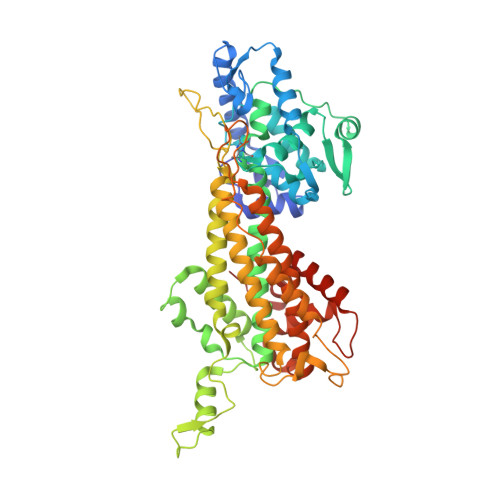Probing the active site of MIO-dependent aminomutases, key catalysts in the biosynthesis of beta-amino acids incorporated in secondary metabolites
Cooke, H.A., Bruner, S.D.(2010) Biopolymers 93: 802-810
- PubMed: 20577998
- DOI: https://doi.org/10.1002/bip.21500
- Primary Citation of Related Structures:
3KDY, 3KDZ - PubMed Abstract:
The tyrosine aminomutase SgTAM produces (S)-ss-tyrosine from L-tyrosine in the biosynthesis of the enediyne antitumor antibiotic C-1027. This conversion is promoted by the methylideneimidazole-5-one (MIO) prosthetic group. MIO was first identified in the homologous family of ammonia lyases, which deaminate aromatic amino acids to form alpha,ss-unsaturated carboxylates. Studies of substrate specificity have been described for lyases but there have been limited reports in altering the substrate specificity of aminomutases. Furthermore, it remains unclear as to what structural properties are responsible for catalyzing the presumed readdition of the amino group into the alpha,ss-unsaturated intermediates to form ss-amino acids. Attempts to elucidate specificity and mechanistic determinants of SgTAM have also proved to be difficult as it is recalcitrant to perturbations to the active site via mutagenesis. An X-ray cocrystal structure of the SgTAM mutant of the catalytic base with L-tyrosine verified important substrate binding residues as well as the enzymatic base. Further mutagenesis revealed that removal of these crucial interactions renders the enzyme inactive. Proposed structural determinants for mutase activity probed via mutagenesis, time-point assays and X-ray crystallography revealed a complicated role for these residues in maintaining key quaternary structure properties that aid in catalysis.
- Department of Chemistry, Boston College, Chestnut Hill, MA 02467-3860, USA. bruner@ufl.edu
Organizational Affiliation:


















